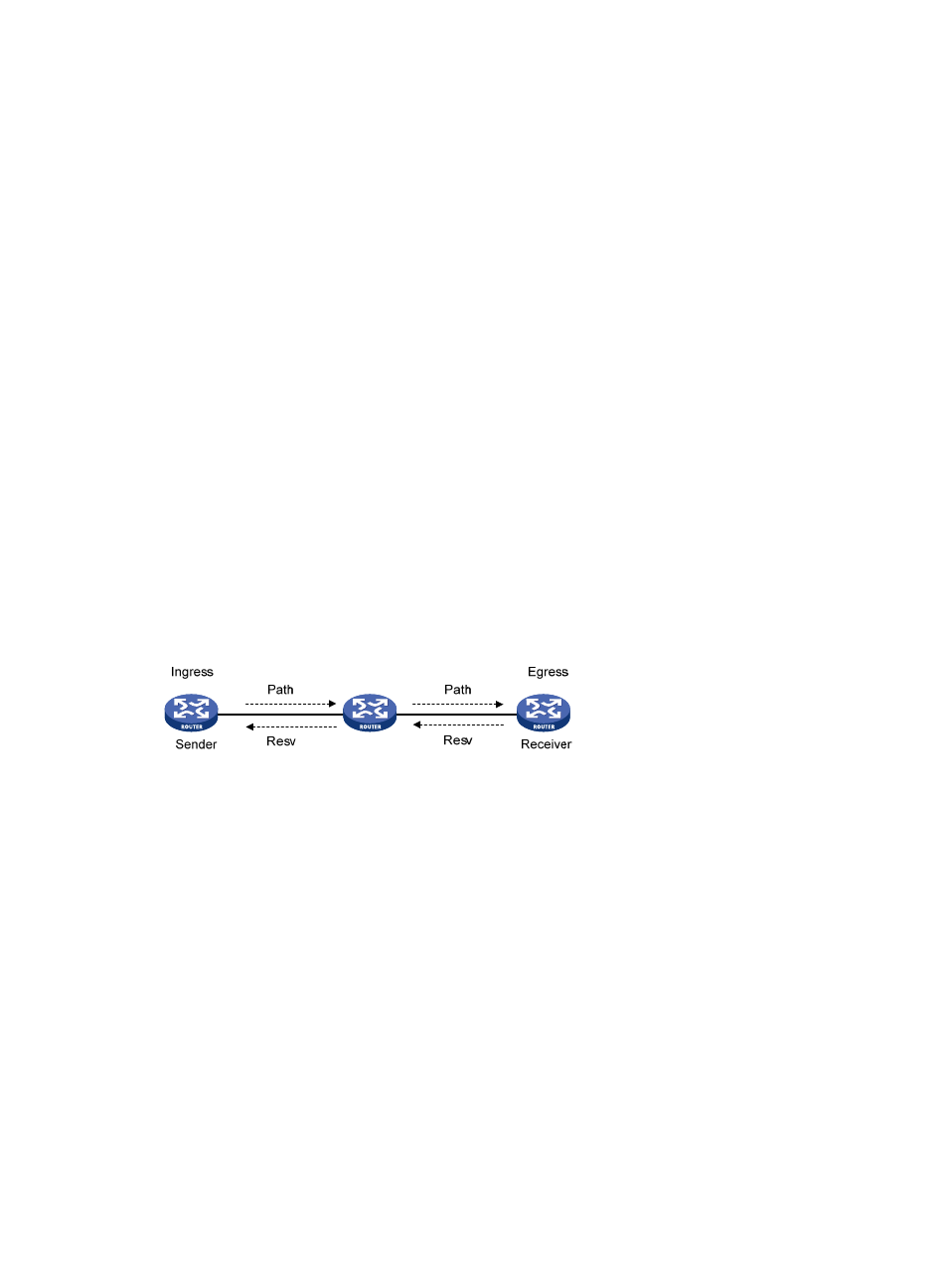Setting up an lsp tunnel, Rsvp refresh mechanism – H3C Technologies H3C S10500 Series Switches User Manual
Page 102

91
Resv messages: sent by each receiver upstream towards senders to request resource reservation and
to create and maintain reservation state on each node along the reverse of data transmission path.
•
PathTear messages: sent downstream to remove the path state and related reservation state on each
node along the path.
•
ResvTear messages: sent upstream to remove the reservation state on each node along the path.
•
PathErr messages: sent upstream to report Path message processing errors to senders. They do not
affect the state of the nodes along the path.
•
ResvErr messages: sent downstream to notify the downstream nodes that an error occurs during
Resv message processing or a reservation error occurs as the result of preemption.
•
ResvConf messages: sent to receivers to confirm Resv messages.
•
Hello messages: sent between any two directly connected RSVP neighbors to set up and maintain
the neighbor relationship that has local significance on the link.
The TE extension to RSVP adds new objects to the Path message and the Resv message. These objects
carry not only label bindings but also routing constraints, supporting CR-LSP and FRR.
•
New objects added to the Path message include LABEL_REQUEST, EXPLICIT_ROUTE,
RECORD_ROUTE, and SESSION_ATTRIBUTE.
•
New objects added to the Resv message include LABEL and RECORD_ROUTE
The LABEL_REQUEST object in the Path message requests the label bindings for an LSP. It is also saved
in the path state block. The node receiving LABEL_REQUEST advertises the label binding using the LABEL
object in the Resv message to the upstream node, accomplishing label advertisement and transmission.
Setting up an LSP tunnel
Figure 27 Setting up an LSP tunnel
Here is a simplified procedure for setting up an LSP tunnel with RSVP:
1.
The ingress LSR sends a Path message that carries the label request information, and then forwards
the message along the path calculated by CSPF hop-by-hop towards the egress LSR.
2.
After receiving the Path message, the egress generates a Resv message carrying the reservation
information and label and then forwards the message towards the ingress along the reverse
direction of the path along which the Path message travels. The LSRs that the Resv message
traverses along the path reserve resources as required.
3.
When the ingress LSR receives the Resv message, LSP is established.
As resources are reserved on the LSRs along the path for the LSP established using RSVP-TE, services
transmitted on the LSP are guaranteed.
RSVP refresh mechanism
RSVP maintains path and reservation state by periodically retransmitting two types of messages: Path
and Resv. These periodically retransmitted Path and Resv messages are called refresh messages. They are
sent along the path that the last Path or Resv message travels to synchronize the state between RSVP
neighbors and to recover lost RSVP messages.